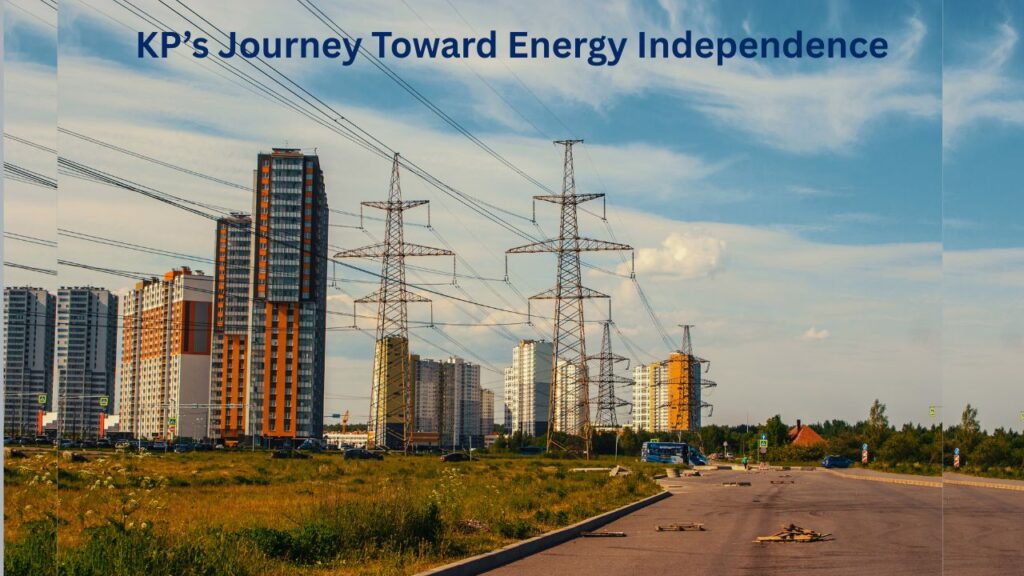Khyber Pakhtunkhwa (KP) is one of Pakistan’s most resource-rich provinces, especially when it comes to energy potential. Yet, for years, the region has struggled with energy shortages, inconsistent supply, and outdated infrastructure.
As KP aims for energy independence, the challenges are clear, but so are the opportunities. This journey toward self-sufficient energy can transform not only the province but also contribute to Pakistan’s national energy stability.
Let’s explore KP’s current energy situation, ongoing projects, hurdles, and the way forward.
Current Energy Crisis in KP
The Reality on the Ground
KP has long faced issues related to energy supply. Frequent power cuts, especially in rural areas, make daily life difficult for families and businesses. Urban centers like Peshawar experience fewer outages, but the growing demand for electricity puts more pressure on the existing system.
One of the daily struggles linked to these challenges is bill management, and for that, users can easily use the PESCO online bill check feature for better tracking. It provides consumers with a simple way to stay aware of their usage during periods of instability.
The Root Causes
Many factors contribute to KP’s energy crisis. These include a dependence on imported electricity from the national grid, outdated distribution systems, and financial losses due to line losses and theft. Climate factors such as extreme winters in the north also increase electricity consumption, putting an extra burden on supply lines.
Despite these challenges, there’s growing momentum toward adopting sustainable and localized energy solutions.
Renewable Energy Projects in KP
Hydropower Potential
KP is blessed with flowing rivers and mountainous terrains—perfect conditions for hydropower generation. Over the past decade, the KP government has initiated several hydropower projects, tapping into this natural advantage. Small and medium-sized dams are being developed to provide steady energy to local communities.
The Rise of Solar and Wind
Apart from hydropower, there’s a growing focus on solar and wind energy in parts of KP. Solar panels are becoming a common sight on rooftops in areas where grid electricity is unreliable. Similarly, in wind corridors near southern KP, preliminary projects have shown promising results for future investments.
These projects don’t just provide clean energy; they also open doors for job creation and technology adoption in the province.
Challenges in Achieving KP Energy Independence
Infrastructure and Investment Gaps
Despite significant progress, the road to KP energy independence is far from smooth. A major hurdle is the outdated infrastructure used to transmit and distribute electricity. Even when generation capacity improves, the weak transmission system causes frequent breakdowns.
To better calculate household usage amidst these uncertain supplies, the PESCO bill calculator can assist residents in managing expenses wisely. It enables consumers to plan their electricity usage with greater awareness of the expected costs.
Funding and Policy Challenges
Large-scale renewable energy projects require consistent policy support and investment. While some international organizations have partnered with local entities, KP still needs a stronger framework for foreign and private investment in the energy sector.
Additionally, shifting political priorities often lead to delays in project implementation, further slowing the province’s march toward energy self-sufficiency.
Opportunities and the Way Forward
The Role of Public-Private Partnerships
One of the brightest opportunities for KP lies in forming public-private partnerships. By involving private investors in renewable energy development, KP can accelerate project timelines while improving efficiency. These partnerships can also introduce new technologies, especially in the field of smart grids and energy storage.
Encouraging Local Innovation
KP has no shortage of skilled engineers, graduates, and entrepreneurs who can contribute to innovative solutions. Startups in the renewable energy space can help provide affordable solar kits, home-based hydropower setups, and smart usage monitoring for local households.
With the right support, these local solutions could not only help KP but become models for other provinces as well.
Is KP Ready for an Energy Future?
KP stands at a critical point in its energy journey. The potential for sustainable energy solutions is vast, and several promising projects are already underway. However, overcoming infrastructure issues, attracting consistent investment, and ensuring policy continuity remain necessary for lasting success.
For residents, actively monitoring consumption and understanding billing are practical steps to stay ahead of rising costs and supply challenges. KP’s journey toward energy independence will ultimately depend on cooperation between communities, businesses, and the government.
As efforts grow stronger, KP could soon become a leader in alternative energy within Pakistan, bringing positive change not just locally, but nationwide.
Conclusion
KP’s journey toward energy independence is both challenging and promising. With rich hydropower resources, growing solar projects, and rising awareness among residents, the province has a real chance to reshape its energy future. However, success depends on fixing outdated systems, encouraging investment, and supporting local innovation.
By combining government efforts with community participation, KP can overcome its hurdles. As progress continues, KP could become a model for sustainable, reliable energy not just for itself, but for all of Pakistan.

